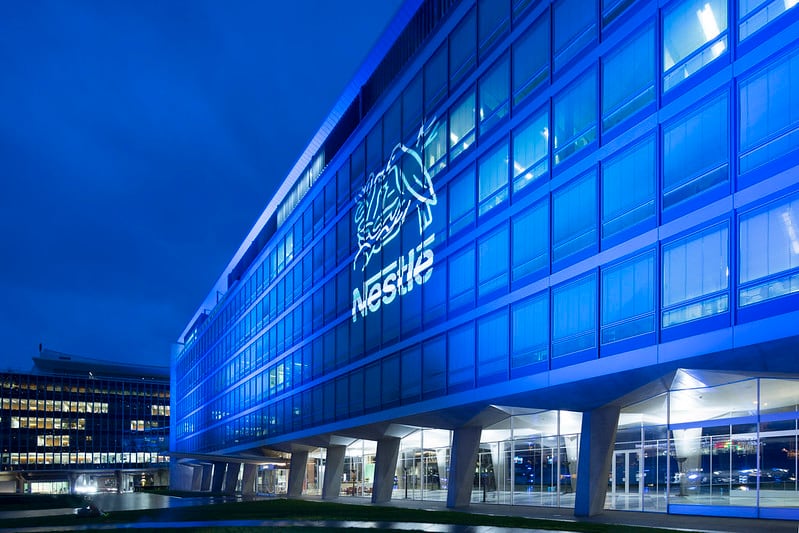Nestle uses RIG to measure ‘normalised’ growth generated by volume and product mix/innovation, as opposed to pricing-led growth which is achieved via price hikes.
Returning to RIG-led growth after the pandemic period was identified as an important target by previous CEO Mark Scheider, who also stated during his term that Nestle was committed to this goal in 2024.
However, RIG became less of a focus later in the year when Schneider was replaced by Laurent Freixe who highlighted a focus on sharpening ‘core’ growth, with RIG being impacted by factors like softer consumer demand and hesitancy towards global brands in markets like Asia.
Freixe was ousted as CEO earlier this year over conduct violation, and now new CEO Philipp Navratil is determined to rest focus on RIG-led growth once more.
“As CEO, I want to share with you my four big priorities – Driving RIG-led growth is the most important [followed by] a winning portfolio, building a culture that delivers and rewards performance, and accelerating business transformation and cost savings,” he told the floor at Nestle’s most recent financial results conference.
“We have been stepping up growth investments and we are seeing positive results on RIG [and] now we need to go bigger and bolder, investing at scale behind the highest return opportunities – This means being rigorous about which opportunities have the best returns, and then significantly increasing the resources we give them.”
In this case, Navratil is determined to move Nestle’s focus beyond ‘individual innovations’ to large-scale projects in order to accelerate the company’s growth and RIG.
“To drive growth at scale, we must go beyond individual innovations and do this in a structured way: Start with the big, strategic consumer platforms, build multi-year innovation pipelines for these platforms; and execute flawlessly with high quality marketing through our billionaire, global brands,” he said.
“Take the example of Nescafé espresso concentrate, one of our six big bets. The strategic consumer platform here is cold coffee – an incredible growth opportunity, and we have built a strong multi-year innovation pipeline [which] we now need to take to our other leading coffee brands Starbucks and Nespresso.”
Nestle’s current six big bets are: Nescafé espresso concentrate, NAN with Sinergity growing up milk, Maggi Air Fryer seasonings, Nestlé Choco Trio, Purina Gourmet Revelations and the Nescafé Dolce Gusto Neo coffee system.
“We need this structured, scaled approach across all of our categories. To be successful with that, we need to step up our marketing capabilities across the organisation – We are not strong enough, and that needs to change,” he stated.
APAC feasibility
For the Asia Pacific region in particular, outside of China Nestle saw a strong 3.7% increase in RIG, the strongest seen since 2021.
“One of the biggest growth contributors in this region was Nescafe soluble, and consumer traction was also strong in the areas of Nescafé Espresso Concentrate and ready-to-drink coffee,” Nestle CFO Anna Manz said.
Several Asian markets saw major espresso Nescafe concentrate coffee launches which were part of the big platform strategy mentioned by Navratil, such as in Vietnam, Australia and China – he previously headed up Nestle’s global Coffee business.
Looking at some of the firm’s other big bets, there is strong potential to be found in this region too, particularly for Maggi Air Fryer seasonings – consumers in this region are already very familiar with Maggi seasonings and condiments as a pantry staple, with most markets having many localised options available.
Prime examples include Maggi chicken or ikan bilis (anchovy) stock cubes in Malaysia, and its liquid seasoning in Thailand.
“We’re really seeing good momentum and strong performance across [markets like] Malaysia, Indonesia, India, Pakistan and I would say across the region in most businesses we’re growing share,” Manz added.
“China is a bit different [due to the economic environment] so we expect to continue to see China weigh on our growth for another quarter or so – we are making changes [including] reducing trade inventory levels and focusing on generating consumer pull, so after [the next quarter we expect] to see that demand generation come through and further acceleration in the region.”
Cost cutting and APAC
Nestle recently also made a shocking announcement that it would be cutting 16,000 jobs over the next two years, an integral part of Navratil’s business transformation and cost savings priority.
“Nestle’s scale and breadth brings advantages, but can also bring complexity, and this creates inefficiencies – we will spend more time on this over the coming months, but it is clear that we can get more agile in how we work, with simpler structures and roles,” he said.
“We will take hard but necessary decision to reduce headcount – we plan a reduction of 12,000 white collar professionals across functions and geographies over the next coming two years, and a further 4,000 headcount reduction as part of ongoing productivity initiatives in manufacturing and supply chain.”
This is undoubtedly a tough situation for Nestle, with many employees now facing intense uncertainty over their job security – and the fact is that things could go either way for staff in the APAC region.
On the one hand, it has been a common occurrence to see MNCs with western roots remove leadership roles in Asia in recent years – this has been seen with big companies like Tyson in the past, and Nestle itself removed the position of Greater China region head last year .
On the other hand, Navratil’s primary objective here is to cut costs and improve productivity so there is some hope – retaining Asian staff would be far less costly than in most other Nestle regions (e.g. Europe and the United States) due to various factors from currency exchange to economic conditions, and production plants in this region tend to work as hubs that service many markets.
A prime example here is found in Nestle Malaysia, which is largely considered to be the main manufacturing hub in the APAC region. It is also the largest halal manufacturer in the firm’s network, exporting more than 500 halal products to over 50 countries globally.





